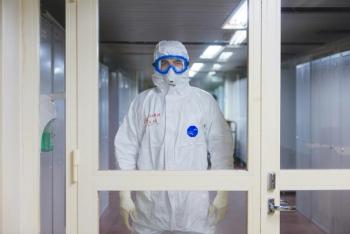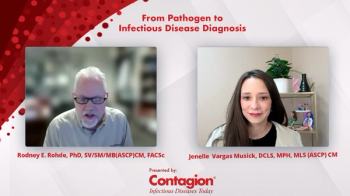
LEAP 1 & 2 Post-Hoc Assessment Data on Lefamulin Quantifies Time to Clinical Response
In both the lefamulin and moxifloxacin treatment groups, the median time from treatment initiation to clinical response was 4 (3-5) days.
Now, investigators are presenting time to clinical response (TTCR) data, an important clinical effectiveness metric, at the 22nd annual Making a Difference in Infectious Diseases (
Based on Infectious Diseases Society of America/American Thoracic Society (IDSA/ATS) guidelines on the management of community acquired pneumonia (CAP) and the US Food and Drug Administration (FDA) CABP guidance, investigators conducted a post-hoc analysis of LEAP 1 and 2 data to determine TTCR. For the study, clinical response was defined as normalization of temperature, heart rate, blood pressure, respiratory rate, and oxygenation status; improvement in at least 2 cardinal CABP symptoms with no cardinal symptom worsening; and no concomitant antibiotic use.
A total of 1215 patients (607 in the lefamulin arm and 608 in the moxifloxacin arm) were included in the study. In both treatment groups, the median time from treatment initiation to clinical response was 4 (3-5) days (p=0.36, log rank test). Using Cox regression, there was no significant difference in TTCR between the treatment groups (HR: 1.04, 95% CI: 0.92-1.17, p = 0.51). TTCR was found to be similar between treatment groups in the stratified analysis based on PORT score, CURB-65 score, baseline pathogen, clinical trial, and ATS severity criteria.
“IV and [oral lefamulin] are associated with a rapid clinical response in adult patients with CABP regardless of baseline pathogen or severity score,” the investigators concluded. “[Lefamulin] was shown to be comparable to [moxifloxacin] and, if approved, would be an alternative monotherapy option to fluoroquinolones for the treatment of adults with CABP.”
Thomas Lodise, PharmD, PhD, professor at Albany College of Pharmacy and Health Sciences and an investigator on the study, discussed the key findings of the research with Contagion® at MAD-ID 2019 (see video).
In February, the FDA
The study, “Post Hoc Assessment of Time to Clinical Response (TTCR) Among Adults with Community-acquired Bacterial Pneumonia (CABP) Who Received Either Lefamulin (LEF) or Moxifloxacin (MOX) in Two Phase III Randomized, Double-blind, Double-dummy Clinical Trials,” was presented at MAD-ID 2019, held May 8-11, 2019, in Orlando, Florida.
Newsletter
Stay ahead of emerging infectious disease threats with expert insights and breaking research. Subscribe now to get updates delivered straight to your inbox.























































































































































































































































































































